I studied Bode plots and the author of my book is somehow relating zeros of transfer functions to Bode plots. What is the relation between zeros or poles of a Bode plot and transfer function? We usually take zeros at \$s=-a\$ (let's say) but how will we show it in a Bode plot since the log of negative values doesn't exist?
-
3There should be a lot of stuff at Wikipedia, Wikibooks and Google e.g. https://global.oup.com/us/companion.websites/fdscontent/uscompanion/us/static/companion.websites/9780199339136/Appendices/Appendix_F.pdf – Findus Apr 14 '20 at 08:04
-
@Bimpelrekkie I've updated the question being more specific. Actually I've read some literature and it doesn't talk about the stuff I wanted to know. – Ali Aqdas Apr 14 '20 at 08:58
-
Have you read about asymptotic Bode plots? https://lpsa.swarthmore.edu/Bode/BodeExamples.html – Chu Apr 14 '20 at 10:13
1 Answers
Bode plot
Take a typical 2nd order low pass filter amplitude response bode plot: -
3-D picture introducing pole-zero diagram
Here's the bigger picture of that response when combined with a pole zero diagram: -
Traditional pole zero diagram
Looking down from above onto the 3-D picture shows the traditional pole zero diagram: -
Pole zero geometry and |H(s)|
What is the relation between zeros or poles of bode plot and transfer function?
If you know the pole positions (or the zero positions) you can predict the bode plot magnitude by calculating the distance from each pole (or zero) to any particular point on the bode plot. This reveals the magnitude along the \$j\omega\$ axis. Note that the red dot below is a variable point on the \$j\omega\$ axis that is required to be calculated. The geometry of the pole zero diagram is examined: -
The reciprocal of \$d_1\cdot d_2\$ gives you the magnitude of the bode plot at any point on the \$j\omega\$ axis. If there was a zero involved (at a distance \$n_1\$ to the particular point on the \$j\omega\$ axis), the magnitude would be the reciprocal of: -
$$\dfrac{d_1\cdot d_2}{n_1}$$
Some pictures from here.
Pole zero diagram and phase response
If you want to know how the phase response is derived from the pole zero diagram, here it is for the conjugate pole example from above: -
But, of course, you could just take the transfer function and mathematically derive phase and magnitude response without reference to the geometry of the pole zero diagram. This is shown further down on this page.
- 434,556
- 28
- 351
- 777
-
3Holy smokes... 5 years of studying control systems and nobody ever showed me the Bode plot and the S-plane in a 3D plot. I kind of knew how they were related, on an intuitive level and through calculations, but those diagrams make everything so much clearer! – craq Apr 15 '20 at 05:25
-
1I'd have killed for an explanation like this when I was still studying electronics. Very well done. – Mast Apr 15 '20 at 12:34
-
1
-
In the pictures you linked, on the website under the header "PEAKING FREQ AND AMPLITUDE" where it says \$|H(j\omega)| = \frac{1}{sqrt(...)}\$ Is that correct? I can't see how that is the magnitude. It looks like they just calculated the magnitude of the denominator, and then reciprocated that magnitude which as far as I know is not valid. – DKNguyen Oct 26 '20 at 05:33
-
@DKNguyen it looks good to me. Rael and complex terms are individually squared then the sum square rooted. – Andy aka Oct 26 '20 at 07:20
-
Magnitude of \$x+ij\$ is \$\sqrt{x^2+y^2}\$, but this is \$\frac{1}{x+ij}\$. So that doesn't seem correct to me that you can just split up the denominator like that. – DKNguyen Oct 26 '20 at 13:18
-
Hmmm, apparently it does check out, though I can't see the logic why unless the logic is that you can reciprocate the complex number and also reciprocates the magnitude. – DKNguyen Oct 26 '20 at 13:24
-
@DKNguyen I appreciate your time spent checking it because nobody's infallible when it comes to stupid mistakes in algebra and it is my website (even if I do admit it's not very joined up in its presentation). I will say that every formula has been proven on paper on more than one occasion over many years but errors might creep in when doing the html and javascript so thanks (I mean it). The stuff lower down on the above answer has yet to reach the website btw. – Andy aka Oct 26 '20 at 16:37




